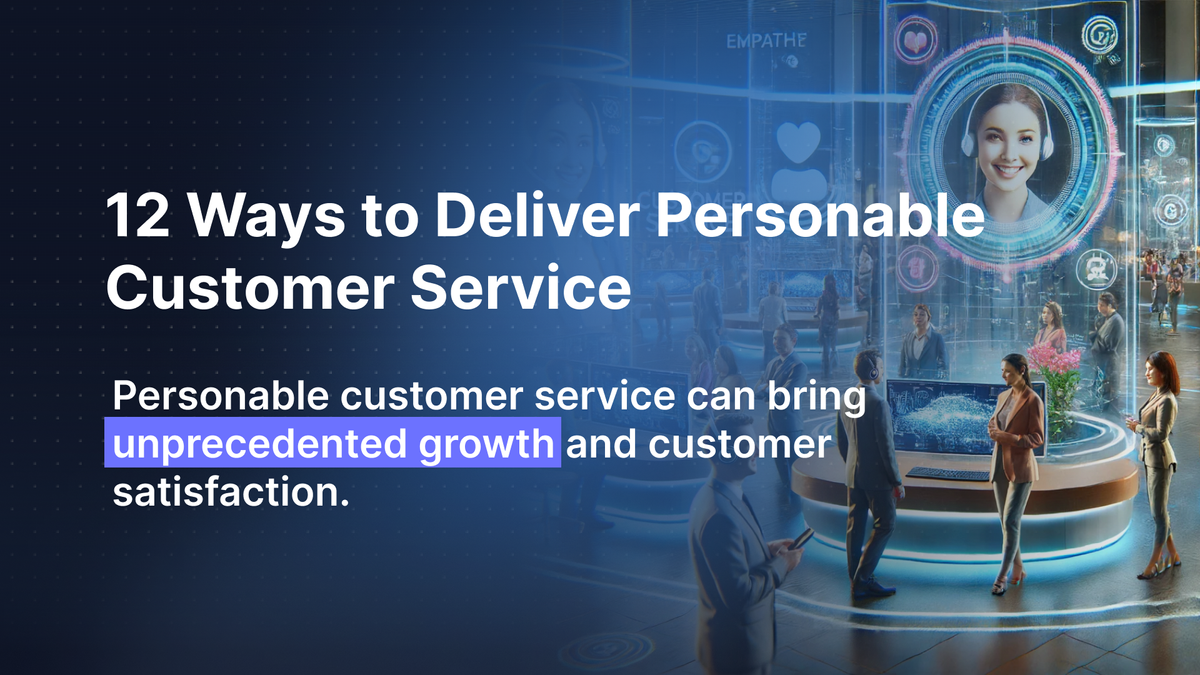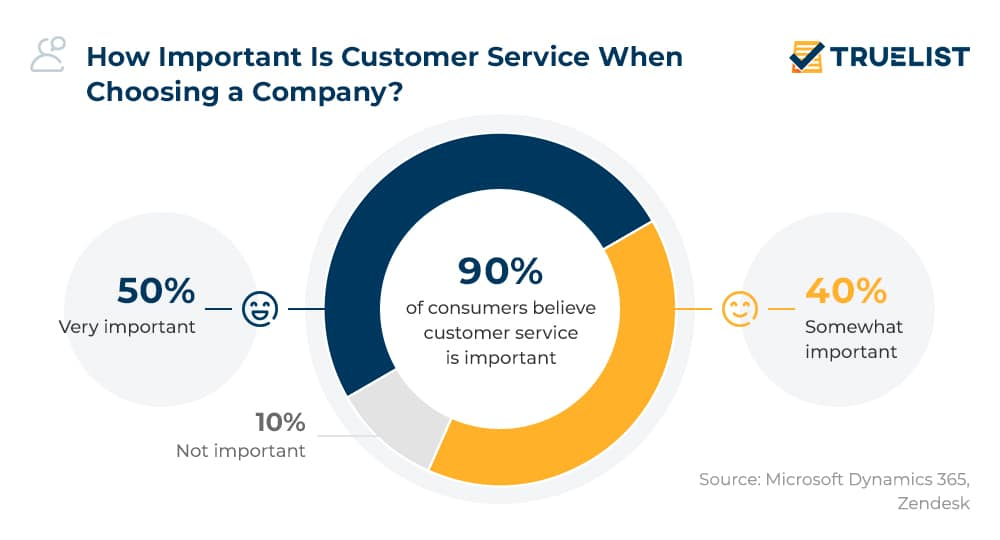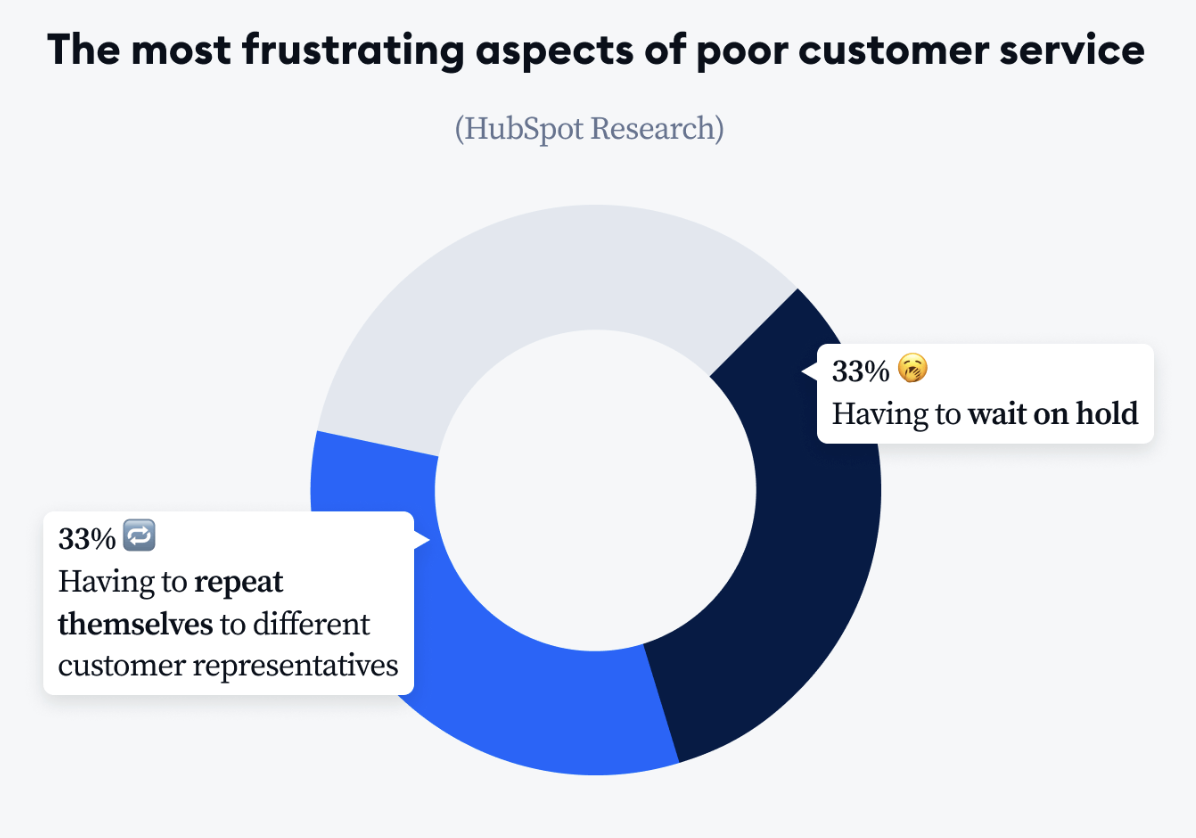Personable customer service can bring unprecedented growth and customer satis...

Having a good product is great, but having personable customer service is even better. Reliable and helpful customer service is essential to retain customers. Without it, you might attract customers, but you won’t keep them. This is because good customer service helps build strong relationships with customers, ensuring they stay loyal.
For any business to succeed, prioritizing customer service is important. It is about consistently providing the same great experience to every customer. But how do you ensure your customer service is up to the mark? How to become more personable? And what makes customers remember you as a good brand?
In this blog, we have mentioned the top ways that you can use in your customer service strategy to retain customers.
Personable customer service is the practice of providing friendly, personal, and empathetic interactions with customers. It is about doing everything you can to meet their needs and expectations. The goal of good customer service is to retain customers and build a strong relationship with them.
With friendly customer service, you can convert your regular customers into loyal ones who stick to your brand for a long time. This is possible by treating customers as individuals instead of transactions. It can involve small gestures, like delivering fast support, remembering a customer’s name or preferences, etc.
Below is a stats showing the importance of customer service when choosing a company.

If you, too, want to improve your customer service, follow the 12 practices mentioned below to deliver exceptional customer service.
Listening to understand means fully focusing on and comprehending the concerns and needs of a customer. It’s important to understand what the customer is saying, with what emotions, and in what context. It is a part of personable customer service that ensures your customer feels heard and valued. The result? More effective problem resolution.
A pro tip: listen actively and repeat your customer’s problem in your own words. You can also ask clarifying questions to ensure a personable conversation. As they recognise your effort, customers will open up more. And it’s a fact that when customers feel genuinely heard, they are more likely to trust the service provider.
When working in customer service, your job is to troubleshoot for customers all day. And to provide personable customer service, you need to know all the aspects of a product or service, including its features, uses, advantages, common issues, etc.
As a customer service agent, you need to instill confidence in your customers so they feel satisfied with the product. For instance, if a customer asks about the compatibility of a new software update, you must be able to explain the benefits and how it can integrate with the existing systems.
This way, you can promptly address their concerns by offering them timely answers and customer friendly recommendations.
It is all about thinking outside the box to provide the most effective solutions to customer problems. Since every customer problem is different, you need to provide each of them with personalized solutions.
This approach to personable customer service requires you to go above and beyond to address customer challenges. For example, if a customer couldn’t attend an event, instead of just offering a refund, you can provide them exclusive access to a live stream along with a special gift package.
Customers recognize such creative and alternate solutions and most probably come back to you again.
According to a study by Forrester, about 73% of online adults say that the most important thing a company can do to provide personable customer service is to value their time. This involves addressing customer inquiries quickly and responding to them promptly. Such speedy responses show customers that you respect their time and are dedicated to solving their problems.
For this, having a well-trained support team is essential. Such a team can quickly access relevant information, making it easy to make decisions on the spot rather than requiring multiple follow-ups.

When customers approach you for help, it often means that your brand has already let them down. So, instead of opting for a hostile attitude, approach your customers with warmth and positivity.
To ensure friendliness in customer service, use the customer's name often in the conversation, wear a big smile when on a video call or in person, and maintain a cheerful and personable demeanor. Instead of directly asking something, try to request, for instance, “Could you please fill out this form?” sounds a lot more pleasing than saying, “You need to fill out this form.”
Know that it's not just about a friendly tone. You need to humanize your interaction to leave a lasting impression on your customers.
According to a study by Personify, 91% of respondents are more likely to do business with companies that show appreciation. When it comes to appreciation, saying “thank you” can go a long way toward providing personable customer service.
To implement this, make a habit of thanking customers at every touch point. For example, you can thank them for their purchase, for their patience during the problem resolution, or for their feedback on a product.
You can also send a personalized thank you note along with their order. Similarly, including something extra in the package or sending samples is a great way to say thank you.
Knowing your customers is important to ensure personable customer service. It is not only about who they are; you should also know their wants, unique preferences, and behaviors. This knowledge allows you to offer more personalized recommendations and present the best possible solutions.
To understand your customers, ask as many questions as you can. At the same time, you can use social media to know your customers better and find out what they like or do not like about your product. Understanding them on a personal level helps create a good customer experience.
Not all problems require dependency on customer agents. In many cases, customers like to resolve the issues themselves quickly instead of waiting for an agent to respond. Thus, as part of personable customer service, you should make resources and tools accessible to customers. This includes FAQs, video tutorials, customer guides, comprehensive knowledge bases, etc.
To make it even more accessible, you can consider creating a searchable FAQ section on the website with clear categories and keywords that can quickly direct customers to relevant answers.
The best part about self-service? It is scalable and cost-effective in the long run.
For personable customer service, another best practice is to personalize the experience for your customers. Since people appreciate being treated with special attention, personalization can result in increased customer satisfaction.
While it’s normal to receive the same queries over and over again, and having a template can save you time, impersonal responses may not be as effective.
To ensure personal customer service, you can use the customer's name, remember the previous interactions, and customize the communication based on their preferences and history. These small gestures go a long way in enhancing customer experience.
Another powerful approach to personable customer service is to ask for and analyze customer feedback and then use it to improve the customer experience. An important aspect of collecting feedback is simplifying the feedback forms to improve usability in gathering input.
You can use surveys, feedback forms, questionnaires, or first-hand feedback when purchasing to find out your customers' needs. Once you have the feedback, review and analyze it to identify the areas of your customer service that need improvement.
Follow-ups are not always about trying to sell your other products. It should be done more often to ensure customer satisfaction. Regular follow-ups are important for providing personable customer service and showing genuine concern for resolving customer issues.
When you take the time to reach out to silent customers, you make them feel special. It also reminds them about your brand, products, and excellent customer service. This builds trust and encourages report business.
Honesty builds trust, and customers only value those businesses that they trust. Trust is also the foundation of long-term customer relationships. According to a survey, about 85% of respondents mentioned that they are more likely to support brands that they find honest.
That being said, personable customer service is impossible without the agent being honest about the brand. It’s important to communicate openly about product limitations, pricing, or any other issues.
For instance, if a digital product is incompatible with a certain software, it’s important to be transparent and inform the customers about it. Being straightforward helps ensure a reliable reputation.
If you want to stay ahead of your competitors, personable customer service is the key. However, you must understand that it cannot happen with just one successful action. You need to analyze and improve different areas of your customer service to get results. A tip is to integrate AI Support and AI Chatbot customer service for more efficient results.
You can customize the AI Customer service to offer more personalized recommendations based on the history. This will improve customer service and result in customer retention in the long run.